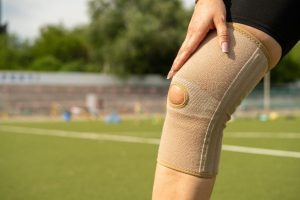Do you find yourself experiencing significant heel pain with the first few steps you take in the morning? It is possible you may be suffering from plantar fasciitis. The good news is with the right treatment plan plantar fasciitis responds well to conservative treatment.
What is Plantar Fasciitis?
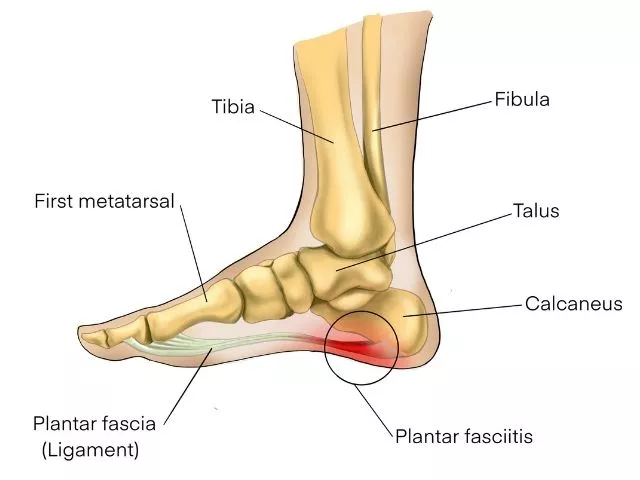
Plantar Fasciitis is one of the most common causes of heel pain. It involves inflammation and irritation of a thick band of tissue that connects the heel bone to the ball of the foot. The injury occurs when repeated weight bearing activities cause strain along the plantar fascia. It is an overuse injury that can happen to anyone but is more prevalent in runners or those who are on their feet for long periods each day.
See our detailed writeup on the causes and fixes for plantar fasciitis here.
Plantar Fasciitis Symptoms
- Heel pain with the first few steps in the morning
- Pain in the bottom of your foot
- Increased pain levels after activity
Plantar Fasciitis Causes and Risk Factors
- Poor foot and gait mechanics
- Obesity
- Sudden increase in activity level
- Poor shoe wear
- Tight Achilles tendon and Gastrocnemius/Soleus muscle
- Prolonged standing on hard surfaces
- Age ranging from 40-60
How is it treated?
Night splints
Night Splints provide a passive stretch to the calf and plantar fascia during sleep. Majority of people sleep with their feet in toe pointed down position due to blankets and/or just the relaxed position which causes the plantar fascia to become shortened. When you take those first few steps in the morning the plantar fascia becomes lengthened causing those painful few steps.
Orthotics
Orthotics may be recommended to help distribute pressure across the foot more evenly. Orthotics can be purchased over the counter or prescribed. Prescription orthotics are form fitted specifically for you to correct foot and gait abnormalities.
Anti-inflammatories
ICE, NSAIDS, Cortisone injections, and Iontophoresis can help reduce pain and inflammation.
Physical Therapy
Physical therapy takes a comprehensive approach when it comes to treating injuries. The first thing your physical therapist will do is complete a gait and posture assessment. A typical gait and/or posture assessment asses how one’s musculoskeletal system adapts to stressors. From here the physical therapist can determine what strengthening and stretching exercises may be beneficial. A few other tools physical therapist can use to treat plantar fasciitis are taping techniques, dry needling, ASTYM, and shoe wear recommendations.
Plantar Fasciitis Exercises and Stretches
Plantar fasciitis is one of the most common forms of heel pain. If heel pain is preventing you from an active lifestyle it is time to take action. Below are stretches and exercises that can help relieve your symptoms of plantar fasciitis. We only have three minutes to complete these exercises so complete these stretches throughout the day if necessary. You may want to try massaging the bottom of your foot followed by stretching before getting out of bed. This can decrease the intensity of your pain with those first few steps you take. If these tips do not improve your symptoms significantly after a couple sessions call us at Petersen Physical Therapy so we can help you get back on your feet!
Standing Calf Muscle Stretch
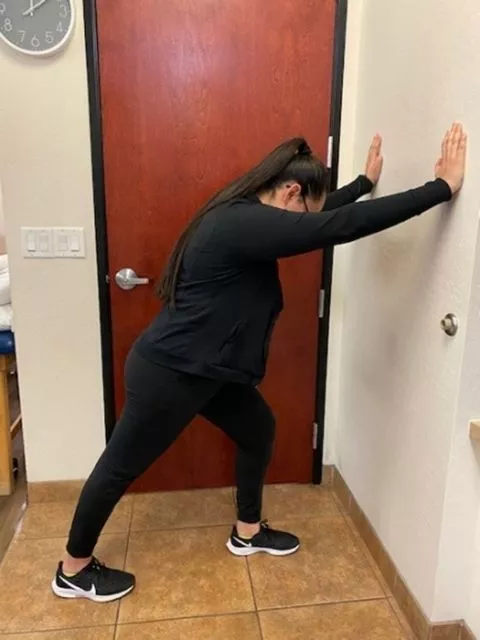
Begin by standing with the leg you want to stretch behind the other. While holding onto a stable surface gently lean forward allowing your front knee to bend. Make sure you keep your back knee straight and heel remains planted on the ground. Continue until you feel a stretch. Hold the stretch for 30 seconds. Repeat as needed.
Big Toe and Plantar Fascia Stretch
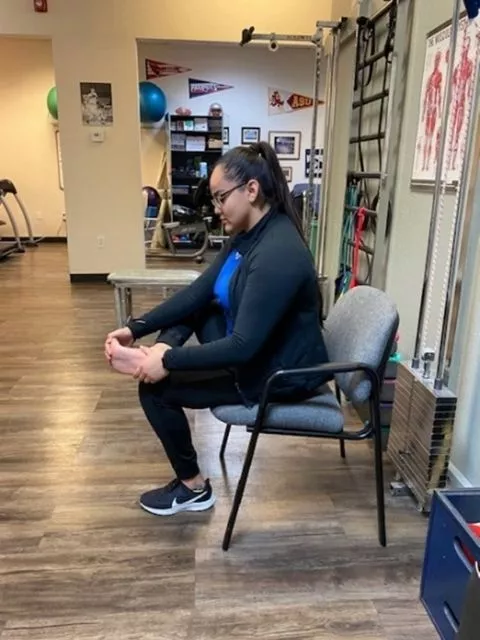
While seated, cross your affected ankle on top of your other leg. Then grab all toes and bend them back into extension. Continue until you feel a stretch on the bottom of your foot. Hold the stretch for 30 seconds. Repeat as needed.
Ball Roll or Frozen Bottle Roll
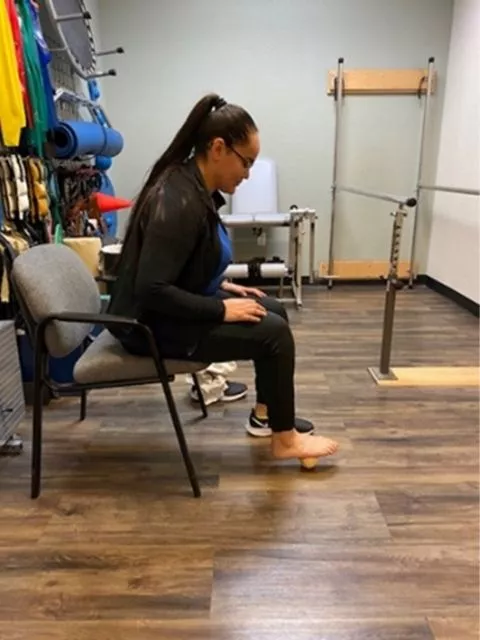
Place foot on tennis ball or frozen plastic water bottle. Roll the object slowly from the ball of your foot to your heel. Be sure to apply pressure but not enough to cause pain. This exercise should be a gentle but soothing exercise. Repeat for 2 min (up to 5 min).
Next Steps
We recommend doing these stretches daily. Since this stretching session should only take a few minutes, you may even want to do it twice per day. If you notice that these plantar fasciitis stretches help, great! If you don’t notice improvement, we recommend seeking assessment from a professional. If you live anywhere near the East Valley area in Arizona, give one of our offices a call – we offer free assessments to get you on the right track.



